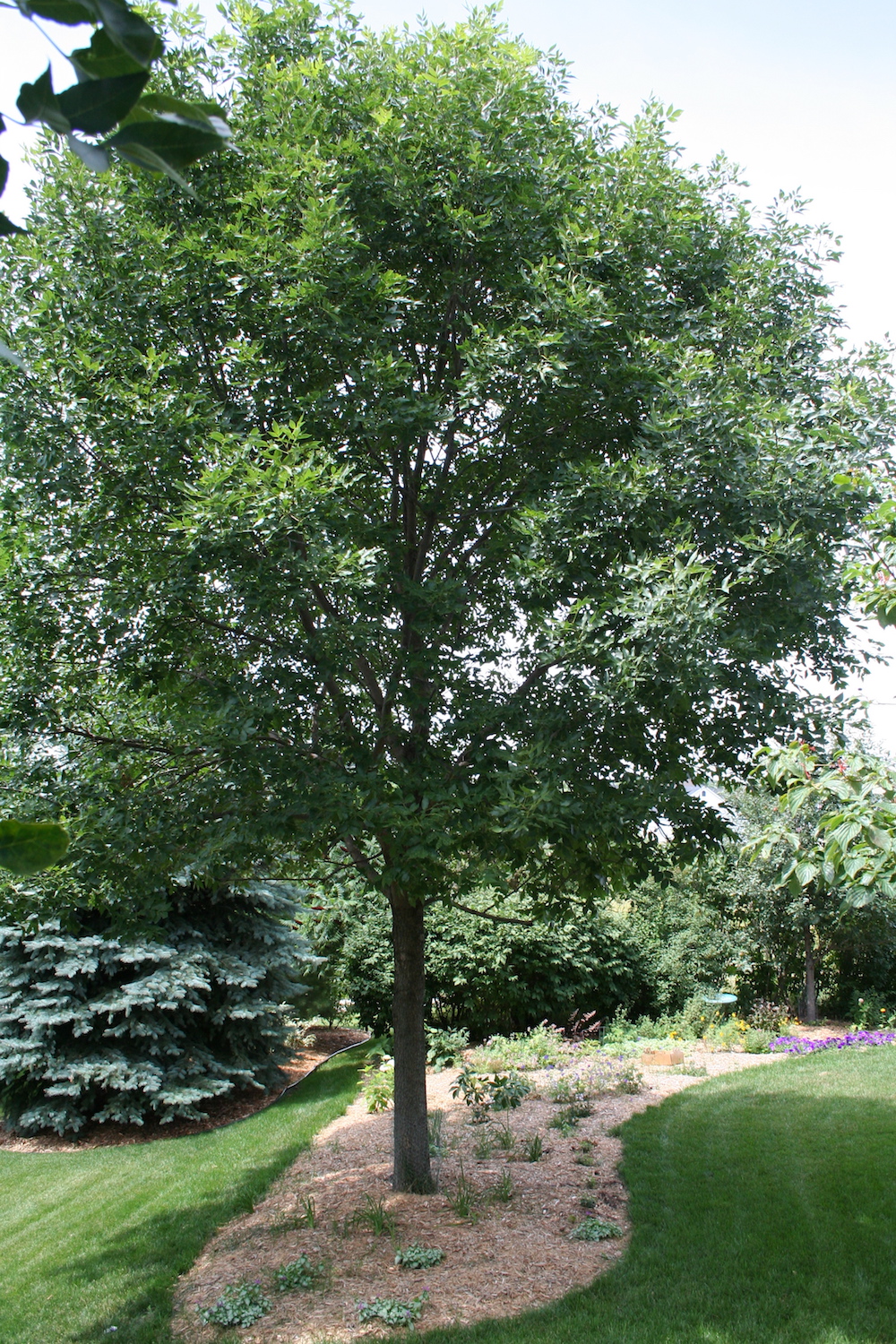Emerald Ash Borer has been a threat to Minnesota homeowners and our forests since about 2007. While lots of photos of Emerald Ash Borers are on the internet, many people do not know how to identify an ash tree and may not even know that they have an ash in their yard. (Odds are, you do — these are very common trees in Minnesota.) The photo above is a shot of a Marshall seedless ash in my Northfield yard. It was planted as a mature tree in 1999, and over the years we lived in the house, it grew to be a lovely shade tree, nicely shaped and taller than the roof of our house. It was terrific at blocking the view from my kitchen window to my neighbor’s back deck—something both of us appreciated!
Above is the bark, which is one way to identify an ash tree. The borer is usually discovered when homeowners notice thinning at the top of their tree and dieback. Arborists will remove some bark and look for the characteristic galleries of the borer. The leaves of an ash tree are oblong shaped with a point at the end. They form in clusters with an odd number of leaves, say 7 or 9 leaves, with most of them arrayed in pairs along a stem and then one leaf at the end of the stem.
Hope this is helpful for those uncertain about whether they have an ash tree in their yards. If you fear your ash is unwell and may have ash borers, do not hesitate to contact your city or a local arborist for help.


Good idea for a post. Might you perhaps also post a photo of an older ash, as these have the deep diamond pattern in the bark which is so recognizable as one walks past the trees, even before one looks up at the leaves to confirm the identification?
Good idea, Penny. I believe there are some older ash trees near City Hall. I’ll have to remember to take my camera next time I’m in that area.